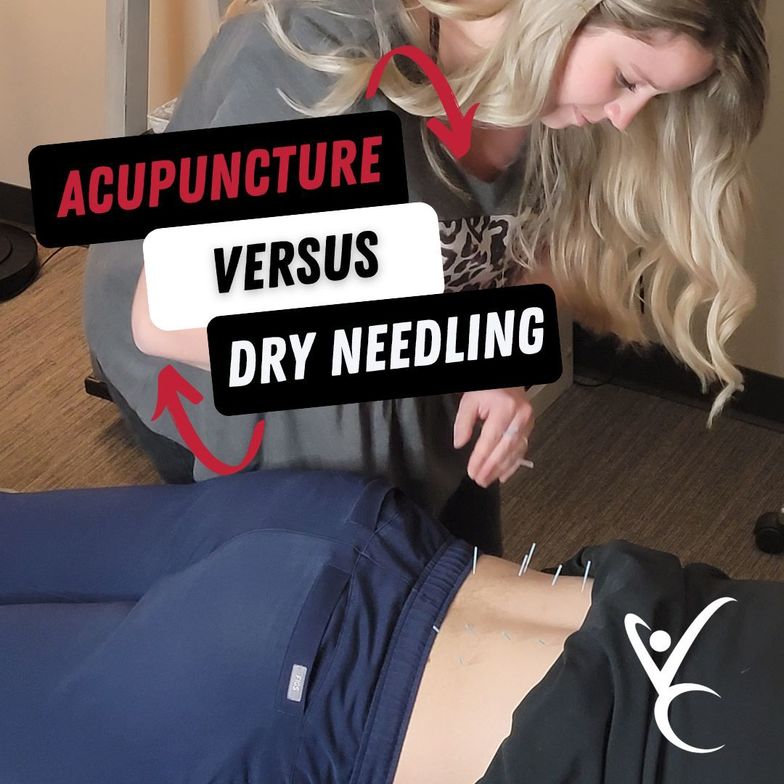
Acupuncture vs Dry Needling: Understanding the Differences
Acupuncture and dry needling are two distinct therapeutic approaches that involve the use of thin needles to address various health concerns. While both techniques share the common element of needle insertion, they differ significantly in their historical origins, underlying principles, treatment goals, and application. In this blog post, we aim to explore the disparities between acupuncture and dry needling, providing readers with a comprehensive understanding of these two modalities.
Acupuncture: An Ancient Healing Art Historical Roots: Acupuncture is deeply rooted in traditional Chinese medicine, with a history spanning thousands of years. It is based on the concept of balancing the flow of energy, known as "Qi," through meridians or pathways in the body. According to traditional Chinese medicine, the harmonious flow of Qi is crucial for maintaining overall health and well-being.
Needle Techniques and Insertion: During acupuncture treatment, thin needles are skillfully inserted at specific acupuncture points along the body's meridians. The depth of insertion and the manipulation of the needles may vary based on the individual's condition and the practitioner's assessment. Acupuncture is often associated with a gentle and relaxing needle insertion process.
Treatment Approaches and Goals: Acupuncture is known for its holistic approach to health, aiming to address a wide range of physical, emotional, and mental health conditions. This ancient healing art is often employed to alleviate pain, reduce stress, improve digestive function, support emotional well-being, and promote overall balance within the body.
Dry Needling: A Modern Musculoskeletal Technique Origin and Development: Unlike acupuncture, dry needling is a relatively modern technique that emerged from Western medicine and is primarily focused on addressing musculoskeletal pain and dysfunction. It targets myofascial trigger points, which are hyperirritable spots within muscles associated with palpable nodules or tight muscles that can cause pain and restrict movement.
Needle Techniques and Insertion: In the practice of dry needling, practitioners utilize thin, solid needles to directly target myofascial trigger points or tight spots within muscles. The technique often involves deeper needle insertions in the affected areas to elicit specific physiological responses within the muscle tissue.
Treatment Approaches and Goals: Dry needling is commonly used to release muscle tension, alleviate pain, improve range of motion, and enhance muscle function. By directly targeting trigger points, this technique aims to address localized muscular issues and promote overall musculoskeletal health.
Key Differences and Considerations
- Philosophical Frameworks: Acupuncture is grounded in the traditional Chinese medicine concepts of Qi, meridians, and holistic wellness, while dry needling is based on Western anatomical and physiological principles, focusing on musculoskeletal pain and dysfunction.
- Treatment Goals: Acupuncture is geared towards addressing a broad spectrum of physical, emotional, and mental health conditions, while dry needling is particularly tailored to target myofascial trigger points and alleviate musculoskeletal discomfort.
- Application and Indications: Acupuncture is utilized for conditions such as chronic pain, stress, anxiety, digestive issues, and more, whereas dry needling is primarily employed for musculoskeletal problems, including muscle pain, tension headaches, and sports injuries.
- Qualified Practitioners: Both acupuncture and dry needling should be performed by qualified and licensed practitioners with specialized training in their respective techniques to ensure safe and effective treatment.
Seek Professional Guidance It's important to note that this blog post serves as an informational resource and does not replace professional medical advice. Always consult with licensed acupuncturists or dry needling practitioners for personalized treatment considerations and guidance tailored to your unique health situation. In conclusion, by gaining a comprehensive understanding of the disparities between acupuncture and dry needling, individuals can make informed choices regarding complementary therapeutic options to support their overall well-being and address specific health issues. Whether seeking holistic balance through acupuncture or targeted relief from musculoskeletal discomfort through dry needling, the guidance of qualified practitioners can help individuals embark on a path towards enhanced health and vitality.
We are always here at Venture to help you move better, feel better, and be a better you. Give us a call or schedule online your visit with us today!





